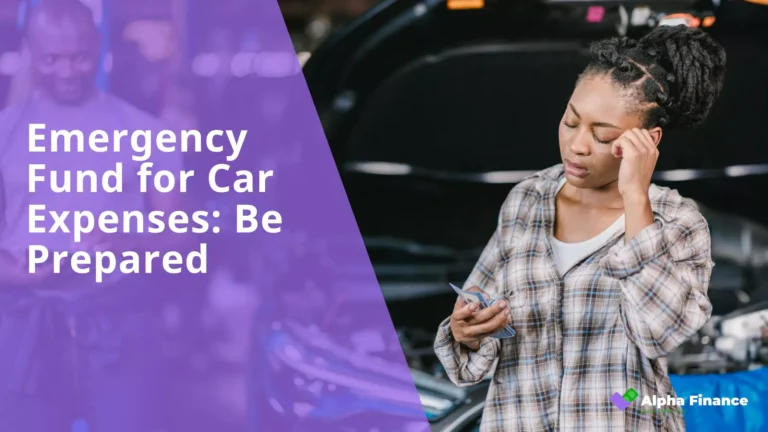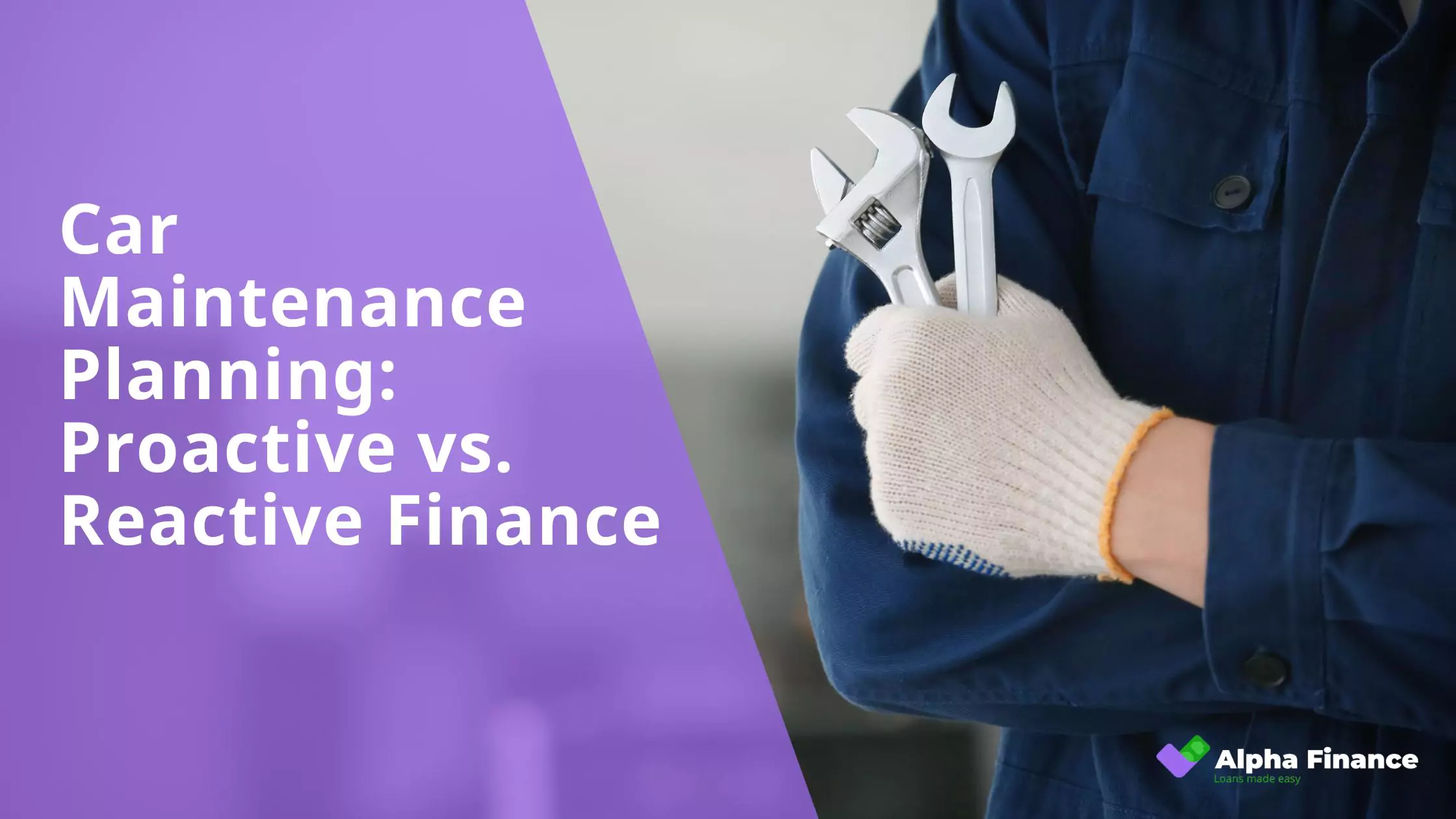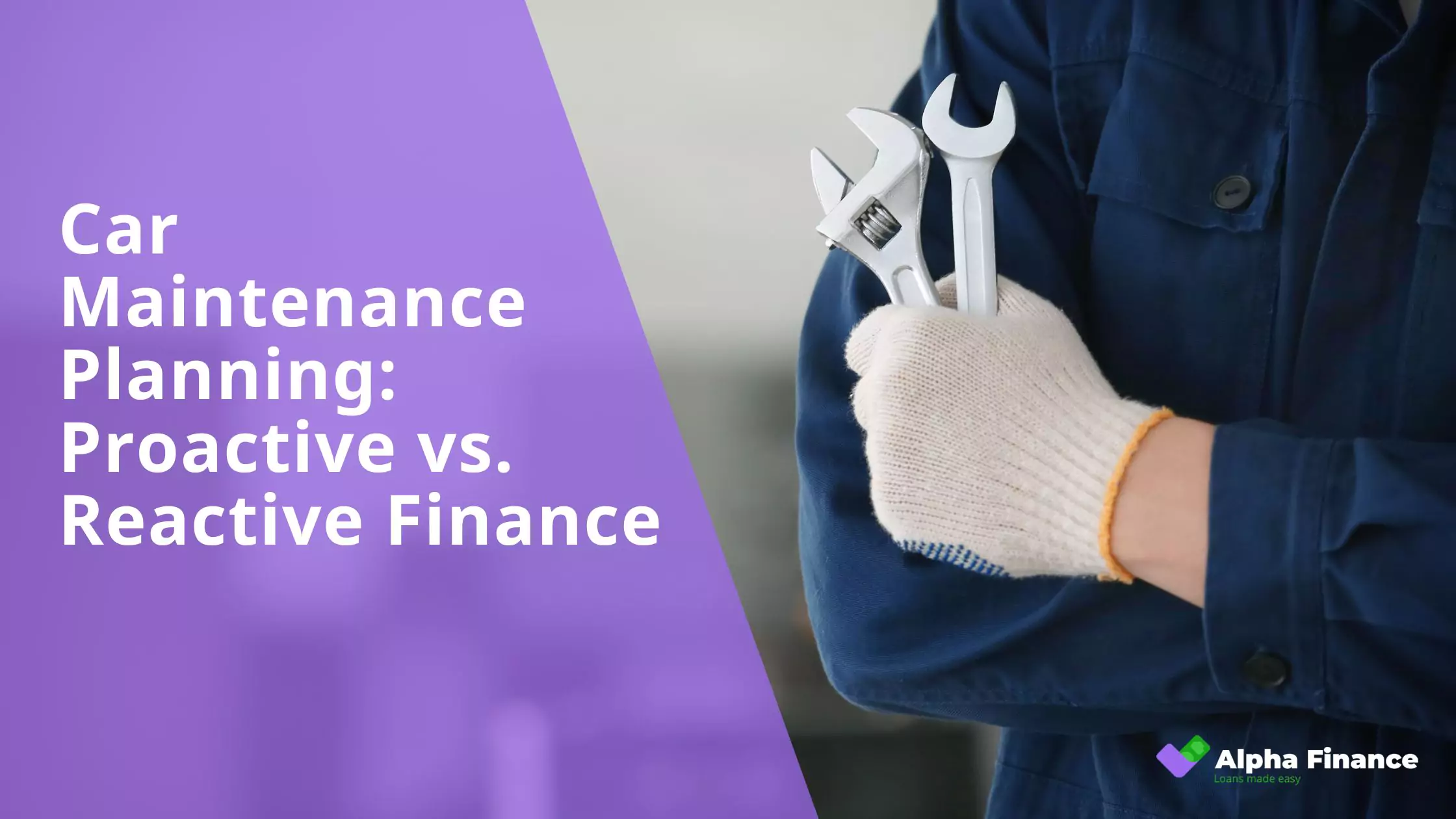Beyond the regular petrol refills and scheduled servicing, and even after navigating the complexities of car finance, owning a car inevitably brings with it a host of unpredictable costs. A tyre blowout on a long drive, a battery suddenly giving up on a cold morning, or an unexpected breakdown requiring immediate attention – these are not just inconveniences; they can be significant financial burdens. This is where the concept of a dedicated emergency fund for your car comes into play. Think of it as a financial safety net specifically designed to cushion the blow of these unforeseen expenses, ensuring you can keep your vehicle running without derailing your overall financial well-being, especially after committing to car finance repayments. This guide will walk you through the importance of establishing and effectively using a car emergency fund, empowering you to face the unexpected with confidence.
Why a Separate Car Emergency Fund?
While a general emergency fund is a cornerstone of financial security, car-related issues often warrant their own dedicated savings. Here’s why:
- Distinct Needs: Your general emergency fund is likely earmarked for larger, less frequent crises like medical emergencies or job loss. Car repairs, while potentially costly, tend to occur more frequently than these major life events. Dipping into your essential savings for a flat tyre or a broken fan belt can deplete funds meant for more critical situations.
- Frequency and Cost: Unlike some other emergencies, car repairs are a relatively common occurrence throughout the lifespan of a vehicle. Tyres wear out, batteries fail, and mechanical components can break down, often at inconvenient times and with varying degrees of expense. Ignoring these issues can lead to further damage and higher costs down the line, making it even harder to meet the obligations of a bad credit car loan.
- Preventing Debt: Without a dedicated fund, the temptation to put unexpected car repairs on a credit card – often with high interest rates – becomes strong. This can lead to a cycle of debt that’s difficult to escape. A dedicated fund allows you to handle these expenses with cash, avoiding interest charges and preserving your creditworthiness.
- Examples of the Unexpected: Think about:
- Tyre replacement: A sudden puncture or worn treads requiring a full set.
- Battery failure: Leaving you stranded and needing an immediate replacement.
- Breakdowns: Engine trouble, transmission issues, or other mechanical failures requiring towing and potentially extensive repairs.
- Brake repairs: Essential for safety and can be costly.
- Windscreen damage: Cracks or chips needing repair or replacement.
- Cooling system issues: Overheating can cause significant engine damage if not addressed promptly.
How Much Should You Save in Your Car Emergency Fund?
Determining the ideal amount for your car emergency fund depends on several factors specific to your vehicle and circumstances:
- Consider the Age and Condition of Your Vehicle: Older cars, or those with a history of mechanical issues, are generally more likely to require unexpected repairs. If your vehicle is getting on in years or has high mileage, aiming for a larger emergency fund is a wise precaution.
- Factor in Potential Major Repairs: While smaller issues are more frequent, major repairs like engine or transmission problems can be incredibly expensive. Researching the potential costs of these for your specific vehicle model can help you set a realistic target.
- Think About Your Driving Habits and Mileage: If you clock up a lot of kilometres for work or personal use, your car experiences more wear and tear, increasing the likelihood of needing repairs sooner. High-mileage drivers should aim for a more substantial emergency fund.
- Start Small, Aim Big: Don’t feel you need to reach the full amount overnight. Begin by setting a smaller, achievable savings goal and gradually increase it over time. Every little bit you save provides a buffer against smaller unexpected costs.
- A General Guideline: A common recommendation is to aim for at least $500 to $1000 as a starting point. For older or higher-mileage vehicles, or if you anticipate potentially expensive repairs, aiming for $1500 to $3000 or even the cost of your insurance excess plus a major repair estimate might be more prudent. Ultimately, the ideal amount is what makes you feel financially secure and prepared for most common unexpected car expenses.
Building Your Car Emergency Fund
Creating a dedicated car emergency fund is like building a safety net for your vehicle’s unexpected hiccups. It requires a conscious effort and consistent action. Here’s a more granular look at how to make it happen:
-
Integrate it into Your Budget: Making Savings a Habit: This isn’t just about wanting to save; it’s about making saving a non-negotiable part of your monthly financial plan.
- The Budget Breakdown: Review your current monthly budget. Identify all your income sources and your regular expenses (fixed costs like rent/mortgage, utilities, loan payments, and variable costs like groceries, transportation, entertainment). Once you have a clear picture of your cash flow, look for opportunities to allocate a specific amount to your car emergency fund.
- Treat it Like a Bill: Consider your car emergency fund contribution as a regular “bill” you pay to yourself each month. This mental shift helps prioritise saving over discretionary spending.
- Start Small, Be Consistent: If a large monthly contribution feels overwhelming initially, start with a smaller, manageable amount (even $25 or $50). The key is consistency. Small, regular contributions will accumulate over time. As your financial situation improves, you can gradually increase the amount you save.
- Review and Adjust: Periodically review your budget and your car emergency fund contributions. As your income or expenses change, you may need to adjust the amount you’re saving to ensure it remains a priority.
-
Automate Your Savings: The Power of “Set It and Forget It”: Relying on willpower alone to manually transfer funds each month can be challenging. Automation removes the temptation to skip a month or spend the money elsewhere.
- Direct Transfers: Set up a recurring transfer from your checking account to a separate savings account specifically designated for your car emergency fund. Most banks offer this feature through their online banking platforms.
- Frequency and Timing: Choose a transfer frequency that aligns with your pay schedule (e.g., weekly, bi-weekly, or monthly). Schedule the transfer to occur shortly after you receive your income to ensure the funds are allocated before you have a chance to spend them.
- Dedicated Savings Account: Keeping your car emergency fund in a separate account (even within the same bank) helps you visually track its growth and prevents you from accidentally using those funds for other purposes. Consider a high-yield savings account to earn a small amount of interest on your savings.
-
Cut Unnecessary Expenses: Finding Savings in Your Everyday Spending: Small, seemingly insignificant daily or weekly expenses can add up significantly over time. Identifying and reducing these can free up a surprising amount of money for your car emergency fund.
- Track Your Spending: For a week or two, meticulously track every peso you spend. This will highlight where your money is actually going and reveal areas where you might be overspending.
- Identify “Wants” vs. “Needs”: Differentiate between essential expenses and discretionary spending. Are there any “wants” you can temporarily reduce or eliminate to boost your savings?
- Small Changes, Big Impact: Consider:
- Bringing your own lunch and coffee instead of buying out.
- Reducing entertainment spending (e.g., fewer movie nights or takeout meals).
- Cancelling unused subscriptions (streaming services, gym memberships).
- Finding free or cheaper alternatives for hobbies and activities.
- The “Latte Factor”: Even small daily savings, like skipping an expensive coffee, can accumulate to a substantial amount over a year.
-
Round Up Purchases: Saving the Spare Change: This is a simple yet effective way to incrementally build your car emergency fund without feeling a significant pinch.
- Bank Features: Some banks offer features that automatically round up your debit card purchases to the nearest peso and transfer the difference to a designated savings account.
- Manual Rounding: If your bank doesn’t offer this, you can manually round up your transactions and make a weekly or monthly transfer of the accumulated “spare change” to your car fund.
- Digital Rounding Apps: Several apps are designed to help you round up purchases and save the difference automatically.
-
Sell Unused Items: Turning Clutter into Cash: Look around your home for items you no longer need, use, or want. Selling these can provide a significant one-time boost to your car emergency fund.
- Online Marketplaces: Platforms like Facebook Marketplace, Carousell, or local online selling groups make it easy to sell your unwanted items.
- Garage Sales or Swap Meets: Consider organising a garage sale or participating in a local swap meet to declutter and earn some cash.
- Be Realistic with Pricing: Price your items competitively to ensure they sell. Every peso you earn can go directly into your car emergency fund.
Using Your Car Emergency Fund Wisely
Your car emergency fund is a valuable resource, and it’s important to use it judiciously for its intended purpose. Misusing it can leave you vulnerable when a genuine car emergency strikes.
-
Distinguish Between Emergency and Regular Maintenance: Knowing When to Tap In: This is the crucial first step in using your fund effectively.
- Emergency Signals: Think sudden, unexpected issues that impact the safety or basic functionality of your vehicle, preventing you from using it reliably. Examples include:
- Sudden tyre blowout requiring immediate replacement.
- Complete battery failure leaving you stranded.
- Brake failure or significant brake noise indicating a safety hazard.
- Engine overheating or unusual noises suggesting a serious mechanical problem.
- Damage from an accident requiring immediate repair for safety or legal reasons.
- Regular Maintenance Red Flags (Avoid Using the Emergency Fund): These are predictable and should be budgeted for separately:
- Scheduled oil changes.
- Routine tyre rotations.
- Replacing worn wiper blades (unless they fail unexpectedly during heavy rain).
- Minor cosmetic issues.
- Upgrades or non-essential modifications.
- The “Is it Urgent and Unforeseen?” Test: Ask yourself if the issue was unexpected and if it critically impacts the safety or basic operation of your car. If the answer is yes, it’s likely a legitimate use of your emergency fund.
- Emergency Signals: Think sudden, unexpected issues that impact the safety or basic functionality of your vehicle, preventing you from using it reliably. Examples include:
-
Prioritise Essential Repairs: Focusing on What Keeps You Safe and Mobile: When faced with multiple car issues, your emergency fund should first address the most critical ones.
- Safety First: Repairs related to brakes, steering, tyres, and lights should always be prioritised. Driving a vehicle with safety issues puts yourself and others at risk.
- Functionality: Address issues that prevent your car from operating reliably, especially if you rely on it for work or essential daily tasks.
- Prevent Further Damage: Sometimes, addressing a smaller issue promptly can prevent it from escalating into a more expensive repair later. Use your judgment, but err on the side of caution with potentially damaging problems.
- Cosmetic vs. Critical: While a dent or a scratch might be annoying, they are generally not emergencies and can wait until you have the funds outside your emergency fund.
-
Get Multiple Quotes: Being a Savvy Consumer Even in an Emergency: While urgency might tempt you to go with the first repair shop you find, taking a little time to get a few quotes can save you money.
- Call Around: If your car is still drivable (or can be towed affordably), call a few reputable mechanics in your area to get estimates for the repair.
- Be Specific: Clearly explain the issue you’re experiencing when requesting a quote.
- Compare Not Just Price, But Also Reputation: Look for mechanics with good reviews and a history of quality work. The cheapest option isn’t always the best.
- Transparency: Ask for a detailed breakdown of the repair costs, including parts and labour.
-
Don’t Deplete the Entire Fund: Leaving a Buffer for the Next Surprise: After using your car emergency fund for a repair, aim to leave a small buffer in the account if possible.
- The “Murphy’s Law” Principle: Unexpected car issues often seem to happen in clusters. Having a small reserve can provide peace of mind if another problem arises shortly after the first.
- Gradual Replenishment: Even if you have to use a significant portion of your fund, don’t feel pressured to replenish it all immediately. Focus on consistently rebuilding it over time.
- Minimum Buffer Goal: Consider setting a minimum amount you always want to keep in your car emergency fund (e.g., $200-$500) to cover very minor unexpected issues.
Replenishing Your Car Emergency Fund
Once you’ve had to dip into your car emergency fund, it’s essential to make replenishing it a priority to ensure you’re prepared for the next unexpected event.
- Make it a Priority: Adjust your budget to allocate funds specifically for rebuilding your car emergency fund. Treat it as an important financial goal.
- Adjust Your Budget Temporarily: Consider temporarily increasing your contributions to the fund until it’s back to your target amount. Look for additional areas where you can cut back spending in the short term.
- Consider Temporary Side Income: If possible, explore temporary ways to earn extra income, such as selling more unused items or taking on small freelance tasks, and dedicate those earnings to your car emergency fund.
Conclusion: Drive with Confidence Knowing You’re Prepared
Establishing and maintaining a dedicated emergency fund for your car is a proactive step towards financial security and peace of mind as a vehicle owner. By understanding the unique financial risks associated with car ownership, saving diligently, and using your fund wisely, you can shield yourself from the stress and potential debt caused by unexpected repairs. Drive with the confidence that comes from knowing you’re prepared for the inevitable bumps in the road, both literally and figuratively.




